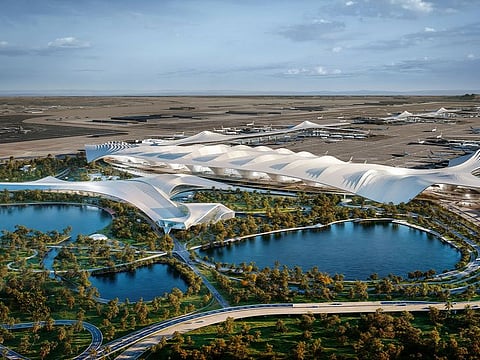Middle East, Asia-Pacific airports set for massive expansion with $240b investment
Investment will create capacity equivalent to more than 13 airports the size of DXB

Dubai: Airports across the Asia-Pacific and Middle East are set for a massive makeover, with a staggering $240 billion earmarked for infrastructure upgrades and new developments over the next decade. This considerable investment aims to significantly boost the number of passengers and the amount of cargo these airports can handle, ultimately fueling economic growth across the regions, according to Airports Council International Asia-Pacific and Middle East (ACI APAC and MID) - a trade association representing over 600 airports from 46 countries/ territories.
ACI said this highlights a strong commitment to meeting the growing demand for air travel and the movement of goods.
This combined investment will create additional capacity for 1.24 billion passengers—the equivalent of more than 13 airports the size of Dubai International Airport, the world’s busiest airport for international passengers—and 71 million tonnes of cargo capacity, which equals nearly 14 times the cargo throughput of Hong Kong International Airport, the top-ranked airport for cargo worldwide. ACI said the increase will ensure airports in Asia-Pacific and the Middle East are well-equipped to handle anticipated future growth.
Higher costs?
However, this begs to raise the question. Will travel become more expensive? According to the ACI, airport charges must be adjusted to support this expansion. This will help airports cover costs and maintain quality while being mindful of affordability for airlines and passengers to ensure continued investment.
Stefano Baronci, Director General of ACI Asia-Pacific & Middle East, said: “The investment marks a critical step in transforming sector and delivering high-quality experience to passengers. The investment will create additional capacity in the medium- to long-term.” Baronci said, “However, infrastructure development alone cannot support the growth to its full potential. In today’s increasingly complex economic landscape, we need the continuous support of governments to liberalise air transportation further and streamline visa policies across regions. These are proven drivers of economic development. In contrast, protectionist measures ultimately hinder progress and limit opportunity.”
Here’s a breakdown of where the money will go:
ACI surveyed more than 30 regional airports to understand their development needs. The findings show a dual focus: modernising existing airports and building entirely new ones.
Upgrading existing airports: A whopping US$136 billion will be poured into brownfield projects, meaning improvements and expansions of current facilities. This is expected to create space for an extra 680 million passengers and 14 million tonnes of cargo annually.
Building new airports: Another US$104 billion will be used for greenfield projects – constructing new airports. These new facilities will add capacity for 562 million more passengers and a massive 57 million tonnes of cargo annually.
SGK Kishore, President of ACI Asia-Pacific and Middle East, said, “The $240 billion investment is not just about concrete and runways; it’s about socio-economic development in the region. Enhanced passenger experiences will stimulate tourism and business travel, while bolstered cargo capacity will streamline supply chains, driving regional trade and development.”
By 2053, the Asia-Pacific and Middle East regions are expected to serve nearly 11 billion passengers, close to a three-fold increase from the 3.9 billion passengers in 2024.
Sign up for the Daily Briefing
Get the latest news and updates straight to your inbox

_resources1_16a0853f604_medium.jpg?w=320&auto=format%2Ccompress&fit=max)




